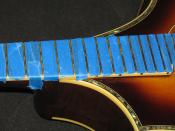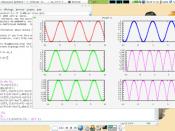Thomas's 'February Afternoon' sonnet contains several varying techniques, which conveys an episode of the First World War.
The structure of this Petrarchan sonnet includes an octave that has two quatrains where the tense is in the past and a sestet (with the following rhyme scheme CDD ECE) that consists of two tercets, but the tense is in the present. The turn is at the end of the octave, this is indicated by a line break and the change of tense.
Certain words in the octave give the sonnet an archaic tone within the diction such as 'caw'-a good use of onomatopoeia-'shaw' and 'parleying'. These words are emphasised by their position-the last word of each quatrain in the octave. However, the sonnet does have a colloquial tone too.
The most distinctive sound in the sestet is 'K', with the consonance words 'oak', 'like', strike' and 'stroke' these have been used to emphasize the metaphor of war in those lines.
Moving on, the strongest metaphor is the birds with human characteristics and the use of military terminology such as: 'parleying', 'command', 'array'. The first line, 'parleying starlings' refers to a conference with the enemy. The third 'Black rooks with white gulls following the plough' resemble the soldiers following their officer, the next part is connected with one of the nine enjambments where the rooks and gulls are commanded by a 'caw'.
Time is emphasized by the use of anaphora with the words 'A thousand years' and the internal rhyme and half rhyme such as 'first' and 'last'.
The final metaphor shown in the last two lines indicates that God is helpless to help us if we ignore him by war.
Overall, the meaning of 'February Afternoon' refers to the endless cycle of war, as it will always be here past, present and future.
304 words.
Bibliography'An Introduction to the Humanities: Form and Reading: Block One' (2005) Milton Keynes, The Open University.
'An Introduction to the Humanities: Resource Book 1' (2005) Milton Keynes, The Open University.
'An Introduction to the Humanities: Illustration Book'






NOT REALLY A ESSAY
This is more like an assignment but still good
0 out of 0 people found this comment useful.